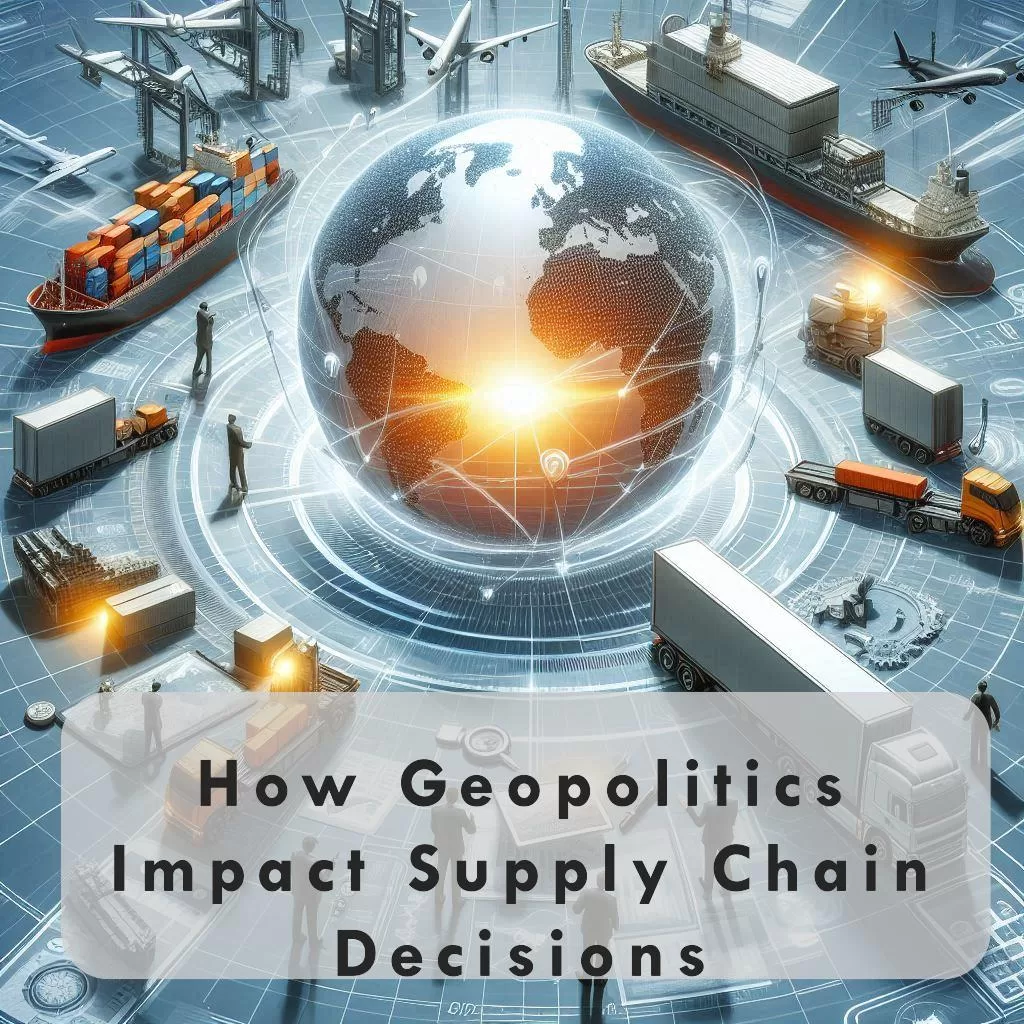The influence of geopolitics on supply chain decisions cannot be overstated. From trade disputes and economic sanctions to geopolitical tensions and pandemics, a myriad of factors constantly reshape the global landscape, presenting both opportunities and challenges for businesses. Understanding these dynamics and their implications is crucial for effective supply chain management.
Geopolitical tensions can disrupt supply chains in multiple ways. Trade barriers, tariffs, and sanctions can restrict the flow of goods and services between countries, leading to increased costs and logistical complexities for businesses. For example, the escalating trade conflict between the United States and China in recent years has prompted many companies to reassess their sourcing strategies and diversify their supplier base to mitigate risks.
Moreover, geopolitical instability in certain regions can threaten the security of supply chains, particularly for industries reliant on critical resources or situated in politically volatile areas. Civil unrest, armed conflicts, or natural disasters can disrupt transportation networks, disrupt production facilities, or cause delays in shipments, impacting the flow of goods and causing disruptions.
The COVID-19 pandemic has further highlighted the vulnerabilities inherent in global supply chains. Travel restrictions, border closures, and lockdown measures have disrupted the movement of goods and labor, leading to shortages of essential products and raw materials. Companies have had to adapt rapidly, reconfigure their supply chains, and prioritize resilience and flexibility to mitigate the impact of future disruptions.
In response to these challenges, businesses are adopting various strategies to navigate the complex geopolitical landscape. One approach is to diversify sourcing and production locations to reduce dependency on a single region or country. By spreading their operations across multiple locations, companies can minimize the risk of supply chain disruptions caused by geopolitical events or natural disasters.
Furthermore, enhancing transparency and visibility across the supply chain is essential for identifying potential risks and developing contingency plans. Leveraging data analytics, digital technologies, and supply chain management platforms can provide real-time insights into market trends, supplier performance, and geopolitical developments, enabling companies to make informed decisions and respond quickly to changing conditions.
Collaboration and partnerships are also crucial for managing geopolitical risks effectively. Building strong relationships with suppliers, logistics providers, and government agencies can help companies navigate regulatory challenges, secure alternative supply sources, and access critical resources during times of crisis.
Ultimately, businesses must adopt a holistic approach to management that integrates geopolitical analysis, risk assessment, and contingency planning into their decision-making processes. By proactively addressing geopolitical challenges and building agile and resilient supply chains, companies can enhance their competitiveness and adaptability in an increasingly uncertain world.
Connect with Factoring Specialist, Chris Lehnes on LinkedIn

